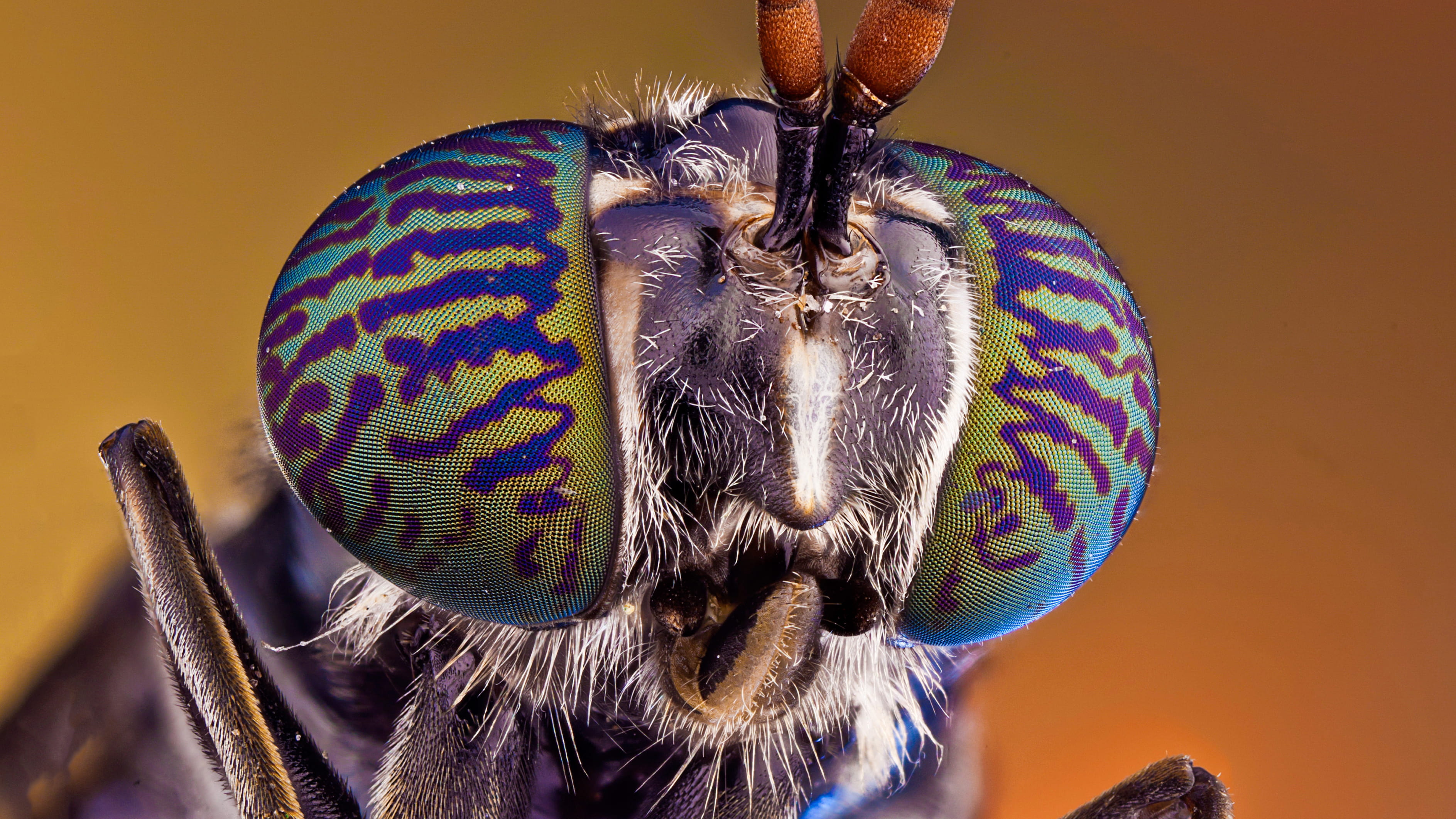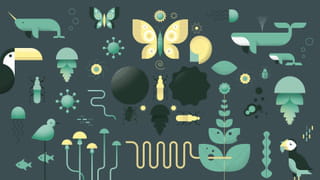Imagine sitting on the beach hunched over your fish and chips as greedy seagulls circle above, when suddenly hundreds, if not thousands, of whales swim past.
Whales everywhere, as far as the eye can see. Some majestically spring from the water as they migrate from north to south. For hours on end.
Can you picture it?
This was once a recurring event, according to the notes of 16th century fishmonger Adriaen Coenen. Once or twice a year, a vast number of whales would pass the Netherlands. Even Prince William of Orange visited the beaches of the North Sea to experience the beauty of whales migrating, Coenen wrote, as if to indicate the scope of the spectacle.

Paradise lost
When it comes to natural observations of the past, the story is always the same: we read descriptions of a natural richness that we couldn’t begin to imagine. Seas teeming with fish, skies dark with birds. Trees filled with kakapos. Vast coral reefs that were the scourge of many a seagoing vessel.
But the notion that nature, or rather "biodiversity", is not faring well has only recently taken root in the collective consciousness.
Last May, the IPBES – something like the United Nations for biodiversity and ecosystems – stated: " a million species are threatened with extinction". The biodiversity crisis immediately became our second major problem, alongside climate change. Some, in fact, consider it an even greater problem. The jury’s still out on that one.

All this attention is wonderful. But the reporting on biodiversity and species extinction has two problems.
One: the definition of "biodiversity" is unclear. It’s often explained in terms of many different species, but how many species really exist? What exactly is a species? And how is the earth’s living cover organised anyway?
Two: by merely focusing on species that may or may not become extinct, we overlook a whole range of other important issues.
The new GBP
Unlike 16th century fishermen, when we think of beaches, we would never picture a horizon filled with whales. Marine biologist Daniel Pauly calls this "the shifting baseline syndrome".
Nobody remembers how abundant nature was before their time. The frame of reference for each new generation is the natural riches from their own youth.
Yet every organism that was once very commonplace first becomes rare before it goes extinct. "You don’t lose abundant animals," says Pauly. "You always lose rare animals. Therefore, they’re not perceived as a big loss." But our memory is too short to know what has actually disappeared.

For extinct species, it’s definitely too late. But before a species is threatened with extinction, the greatest damage has already been done. How do we express this aspect of biodiversity?
The answer: in biomass. In kilogrammes of living matter. How many kilos of creature are there today? How many kilos of creature were there in the past? What if we could map this visually? Would newspapers devote graphs to shrinking biomass, next to pages on economic growth?
Think of it as our Gross Biomass Product or GBP.
What choices would you make if such a concept existed? Would you walk into an H&M thinking about the destruction of natural wealth behind the plastic uniformity? I’m curious. So here’s a biodiversity crash course in species and biomass.
How many species exist?
"One of the most important questions in biology, perhaps even in society, is: how many species exist?" Tree biologist Olaf Bánki of Naturalis Biodiversity, a national museum of natural history in the Netherlands, says with a deep sigh. “We just don’t know." Bánki has devoted his working life to a mega international project: digitising every known species and associated data in an online database called The Catalogue of Life.
We don’t know for three reasons.
One: we simply haven’t discovered all life on earth yet. The tropics and the deep sea alone house all kinds of organisms that no one has ever seen. And some organisms we literally can’t see – they’re too tiny. Biologists call this diminutive stuff "dark matter".
Two: we don’t know what we have already discovered – or even if we’ve in fact discovered some species multiple times. Natural history museums are like closed silos of species information, non-digitised, full of data no one knows exists. Bánki is trying to fix this with his catalogue.
And three: biologists disagree about what a species even is. Over 20 definitions are in use.
So when newspapers – taking a cue from the IPBES – warn that a million species are about to go extinct, they are relying on an estimate of the total number of species on Earth. An estimate from 2011, which claims there are 8.7 million species, give or take 1.3 million.
Estimates from previous decades range from two to 100 million species, although most biologists currently believe there are probably several million. No more than 1.9 million species are listed in the Catalogue of Life.
If we look at the number of species per kingdom, on land and in the sea, the most recent estimate looks like this. (A “kingdom” is a biological rank in the great order of life we call taxonomy.)
The urge to organise the many manifestations of life in clear groups and subgroups is timeless. Even Aristotle took a shot. But the current taxonomic system builds on the work of Swedish biologist and physician Carl Linnaeus (1707-1778), especially his Systema Naturae.
The infographic above lists seven realms: bacteria, archaea, protists, plants, animals, fungi and chromists. (It is unclear whether chromists count as a kingdom.)
So while kingdom is the second highest taxonomic rank, species is the lowest, or, better put, the most specific. Humans belong to the kingdom of animals and the species Homo sapiens. In between are all kinds of different ranks. For example, we belong to the phylum Chordata – animals with the rudiments of a backbone. Below that, we have the class of mammals – animals with the rudiments of a backbone that suckle their young. (For the enthusiast, the full overview is here.)
Taxonomy and its ranks work like an address book. So, The Correspondent HQ can be found on Planet Earth, on the continent of Europe, in the country of the Netherlands, in the province of North Holland, the city of Amsterdam, the street Barentszplein, and so on. But the taxonomic street guide isn’t called Google Maps but "phylogenetic tree". Or in everyday language, the tree of life.
The tree of life maps which organisms are related to which other organisms. Or when creatures embarked on separate evolutionary paths because populations of the same species encountered different challenges in life. In short, which route a species has travelled through evolutionary history.
Think of it this way: life started 3.7bn years ago with a handful of cells floating around in the primordial soup. And now we have everything from whales and humans to lichen. It is precisely this evolution that makes defining what a species is so complicated.
What is a species?
The problem with the concept of "species" is perhaps best illustrated by an anecdote from evolutionary biologist Richard Dawkins.
Dawkins once ended up debating with a lawyer after a lecture.
The lawyer was troubled by the concept of evolution: "If species A evolves into a later species B … there must come a point when a mother belongs to the old species A and her child belongs to the new species B. Members of different species cannot interbreed with one another. I put it to you (…), that a child could hardly be so different from its parents that it could not interbreed with their kind.
Isn’t this a fatal flaw in the theory of evolution?"

To Dawkins, asking this question is as bizarre as claiming that when you heat a kettle full of cold water, there is no specific moment when the water stops being cold and becomes hot, so making a cup of tea is impossible.
The lawyer was clearly using caged thinking: animals can only be species A or species B, and not halfway between species A and B, or one-tenth of the way on the path from A to B.
Taxonomists also use caged thinking; they have to. Without convenient labels like species, they wouldn’t be able to discuss a single animal. But the size of the cage – the degree of variation it allows – is often based on the individual preferences of the taxonomist.
In 1940, biologist Ernst Mayr proposed the most widely accepted definition of species: a collection of organisms that are mutually crossable and have fertile offspring. Tigers and lions can have cubs together, but the cubs themselves are infertile. So tigers and lions are different species.

But polar bears and grizzly bears – also two different species – may beget fertile brown-white bears (grizzly polar bears). What’s more, many animals, such as jellyfish, corals and plants, do not require sex for reproduction. And with bacteria, who knows what’s going on. Are they having sex or eating each other?
That is to say, life doesn’t really care about our species boundaries. Charles Darwin found the whole enterprise of defining boundaries pretty nonsensical.
In 1856, he wrote to his best friend, a botanist: "It is really laughable to see what different ideas are prominent in various naturalists’ minds, when they speak of ‘species’. It all comes, I believe, from trying to define the indefinable.”
Species A and species B do become separated after a sufficient number of generations, says biologist Michael Benton. "It’s not as though every species we see around us are all blending into each other in front of our eyes." At any time, there may be a few hundred species undergoing splitting, and so in this intermediate state.
But regardless of how many species we think exist, there is no question life has become increasingly diverse. In 2016, Benton made the following assessment of how diversification took off in multicellular organisms:
Earth came into being 4.6 billion years ago, and life arrived one billion years later. That life would remain single-celled for three billion years, but around 900 to 700 million years ago, something changed. A few single-celled species discovered the added value of clustering and dividing labour, and so the first real animal gradually emerged.
That first animal was a sponge or a comb jelly; biologists have been discussing this for a decade now. Anyway, multi-cell life began under water. Benton’s graph shows a small explosion of species around 500 million years ago: the Cambrian explosion. And a little later, around 430 million years ago, the pioneering plant kingdom gradually began colonising the world above water.
It clearly shows that when plants invented the phenomenon “flower” – a unprecedented sexual organ – around 140 million years ago, diversification on land went wild . The variation in flying, pollinating insects exploded. With that, the land overtook the sea for good.
Life in biomass
Looking at the species distribution on Earth, animals, particularly insects, would seem the dominant life form. We would live on Planet Insect. But viewed in terms of biomass, it’s plants that have undisputed dominion. In fact, the presence of plants pretty much dwarfs all other forms of life.
We’ve only known since 2018 how much biomass each kingdom is comprised of, thanks to the lab work of Israeli biologist and physicist Ron Milo and his student Yinon Bar-on. They gathered data from field studies all over the world, trying to uncover mathematical relationships between the properties of an environment and the amount of life encountered. So: how warm are certain areas, how much sunlight do they get, what is the distance to the coast here, or the depth of the ocean there? Then they estimate the amount of life in places for which no data is available.
Milo’s lab doesn’t calculate with the full weight of organisms, just their weight in carbon. Milo explains: "In general, you could say that two-thirds of the mass of plants or animals is water." Half of the remaining one-third "dry" weight is carbon. Suppose you weigh 60 kilos: your dry mass is 20 kilos, and your carbon mass 10 kilos.
The combined weight of all life on Earth is an estimated 500 gigatonnes in carbon. Of which 90% is plants, and 5% bacteria. Next are fungi, archaea, protists and finally animals, representing a modest two gigatonnes of carbon. In other words: animals – which get most attention and concern – make up a measly 0.4%!
Before humans began rearing livestock, took up agriculture, and started the industrial revolution, there was probably twice (!) as much biomass: an estimated 1,000 gigatonnes of carbon trapped in living matter. Milo says: "In the last thousand years there has been a strong decrease in biomass, caused by humans. Without a doubt. "
For centuries, we have been eating away at the layer of life that coats the Earth.
Milo continues: "The mammals we keep as livestock make up 20 times as much biomass as all the world’s wild mammals together. A sad fact." Something similar applies to poultry: the combined weight of all chickens on earth is two to three times higher than that of all wild birds, which Milo thinks is just as worrying.
Bánki echoes these concerns: "Look at the current extinction of flying insects. It’s not so much about the local extinction of insect species, but about their plummeting biomass."
On a time scale of hundreds of millions of years, nobody knows what fluctuations occur in terrestrial biomass. Milo mentions the existence of trends, depending on temperature or the position of continents. Just as Benton estimated the increase and decrease in the number of species over time, Milo is working on a graph that shows the fluctuations and recent sharp decrease of Earth’s biomass.
Once we have mapped that decline, we can ask a more relevant question than "How many species are about to disappear?" Namely: "At what rate are we eating away at the Earth’s living outer shell?"
Follow-up questions include: are the systems that produce our food in balance with the natural environment? Or: which species, classes or kingdoms are experiencing a strong biomass decline due to our need for X, Y and Z?
A liveable planet
We cannot live on a dead planet. But it’s unknown how much non-human life we really need for Homo sapiens to survive. If people can manage in martian base camps with tanks of tilapia and a few green plants, a great deal more can be destroyed before our planet becomes truly unliveable.
But is that a life still worth living?
Or would we not know what we’re missing, anyway?
Like a North Sea with stacks of plaice metres high on the seabed, through which eight species of stingrays swim at full force. A sea teeming with so many sharks that violent storms toss them on to the shore in large numbers. And those whales, of course.
Me, I would happily trade some material goods to see thousands of whales moving in unison along Dutch shores again.

This piece first appeared on De Correspondent. It was translated from Dutch by John Edwards.
Illustrations and infographics by Leon de Korte.
 Not a member of The Correspondent yet?
The Correspondent is a member-funded, online platform for collaborative, constructive, ad-free journalism. Choose what you want to pay to become a member today!
Not a member of The Correspondent yet?
The Correspondent is a member-funded, online platform for collaborative, constructive, ad-free journalism. Choose what you want to pay to become a member today!
Dig deeper
 Here’s why there is such a buzz about farming insects – to feed animals
Growing demand for soy-based animal feed has been disastrous for the environment. Could the black soldier fly and other insects be sustainably used in husbandry and aquaculture instead of plants?
Here’s why there is such a buzz about farming insects – to feed animals
Growing demand for soy-based animal feed has been disastrous for the environment. Could the black soldier fly and other insects be sustainably used in husbandry and aquaculture instead of plants?


